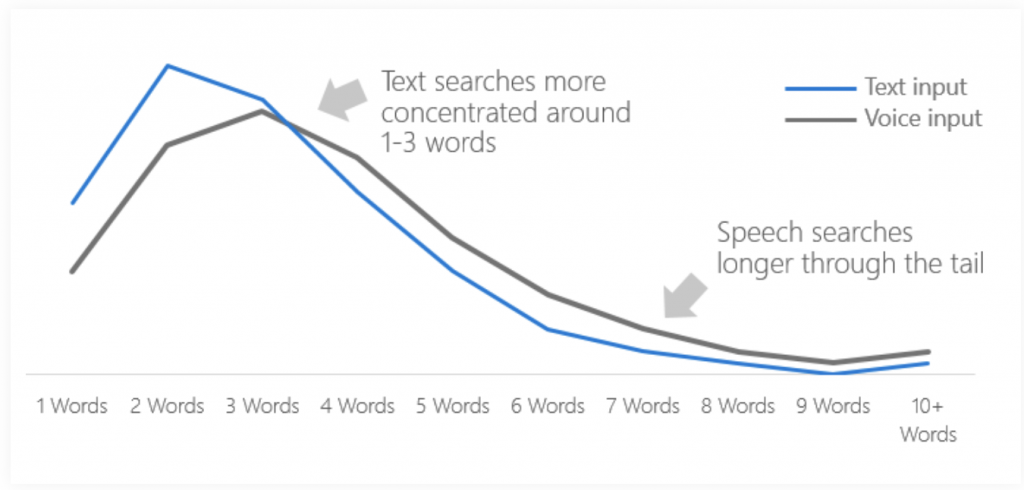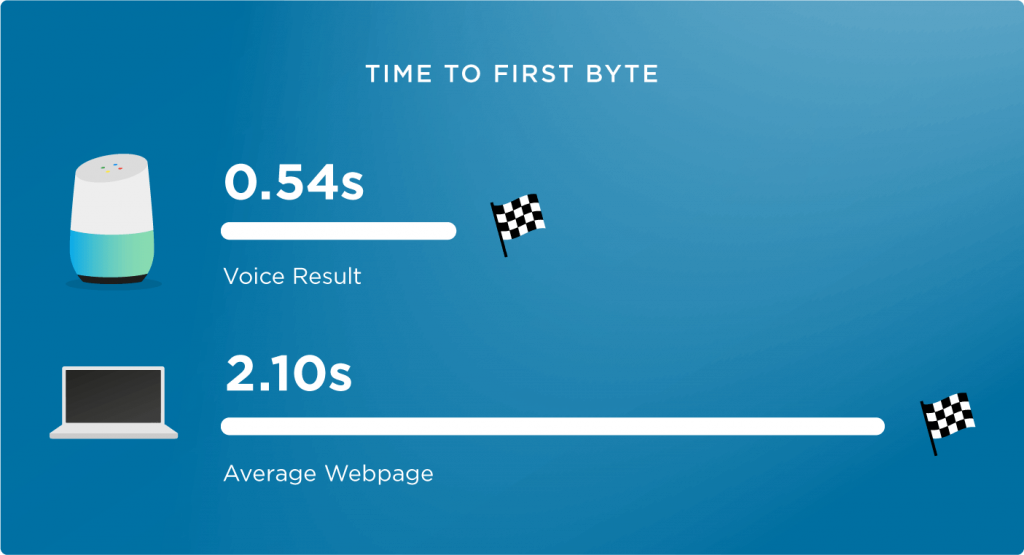Did you know that voice search accounts for more than one billion every month? And about the estimates that more than 50% of search queries would be voice search queries by 2020? If yes, then what are you doing to prepare yourself for future digital marketing?
Yes, mates! The trends are changing, and so are the AI search engines.
The advent of voice search has made making search queries so easy that it’s becoming a revolution. Maximum number of users are now asking all their questions to their voice assistants instead of making type queries.
This totally changes the game for all the SEOs and calls for serious revamp of their content marketing strategy. This is because not just the search type has changed, the way searches are done has also changed.
Previously, users used short search terms like “Best mud cake in Bangalore.” In today’s scenario, they would instead ask their voice assistants, “Where do I get the best mud cake in Bangalore?”
With the change in search terms, your keywords and content also need a revamp. And with the Google RankBrain update, the more relevant your keywords and content is, the better you rank on SERP.
So let’s take a quick look at how you can optimize for voice search and prepare yourself for the digital marketing 2020.
Tip 1: Use conversational/ long-tail keywords to optimize for voice search
The first tip for voice search optimization is doing semantic research. As discussed above, the way search queries are made has changed drastically. This is because people use a different language when they type from when they make a voice search; which is very conversational.
Until today, you must have optimized your website for type-in queries using short-head keywords. But now your keyword research has to be based around long-tail and natural language keywords. This is because of the shift towards voice search and also because of AI search engines. The new engine studies user intent and behaviour to show the most relevant results which can be boosted using long-tail keywords only.
You can see in the following infographic that the text searches are concentrated around 2-3 words, but voice searches are somewhere around 7-8 words. And this why you need to inculcate long-tail and natural language keywords for voice search optimization.

A significant part of voice search queries are question queries like “What is the weather like today?” or “Do I need pest control in my house?” So, you should be paying due emphasis on optimizing question keywords as well.
So make a list of long-tail keywords and blend them with the various types of user voice search queries.
Tip 2: Map the user journey into your content
The second tip is about the content that you form and boost using the researched keywords. The study of customer journey plays a significant role in devising the best content marketing strategy. Your content shall be comprehensive and revolve around all the user’s pain points like – What, How, Why. By doing this, you can form content that answers such queries and make it more relatable.
Tip 3: Use structured and simple data on your site
One big difference between traditional and voice search is that the latter shows just one results or rather speaks only one result. While making a traditional search, users can see different results and explore through them. In the case of voice search, they are shown the one and best result only.
So, how do you ensure to game this?
Google basically shows such results to voice search queries, which are simple and specific to what the user asks. So, a good strategy for voice search optimization would be to include FAQs in all the major sections of your website. Including FAQs will make your content easily traceable and will have better chances of matching with user search terms.
Lastly, keeping your content simple can add the additional cherry on top of your cake. Imagine your users as a layman who doesn’t know anything and want to explore. So, you shall aim to answer them most simply and concisely as possible. Anyways, this is what the AI search engines look for while answering search queries.
For this, you should ensure to create a sitemap and submit in the Google search console. Another thing you should do to help Google bots understand your content is using structured data (schema) markups and create metadata.
Tip 4: Create Google actions or voice assistant’s skills
Now, this is something major, and if you can do this, then you can assume you are going the right way for digital marketing 2020.
This is all about creating actions in Google App or building custom skills in voice assistants. So, how do you do this and optimize for voice search? You will have to create software that expands the ability of voice assistants to interact with your content and make it more accessible to them.
By doing this, you can make it possible for users to have back and forth conversations with the voice assistant about your content and make it more relevant. But, ensuring that such software is useful and optimized for the needs of home voice assistant users is essential.
Tip 5: Make your website mobile-friendly
Did you know that a considerable portion of voice search queries are made through mobile phones? SEOs around the world are already adopting the mobile-first strategy to boost their campaign because it’s more like the age of mobile-friendly movement.
So, to optimize for voice search, you need to make your website mobile-compatible in all terms. This is because a significant portion of search queries are made through mobile phones. If your site is not optimized, then, Google will not be able to access it properly and show it as a voice search result.
Tip 6: Optimize for Featured Snippets
Featured Snippets are the short-answer result that appears to a user search query on top of SERP at position zero. Google shows featured snippets by extracting data from a site that it finds most specific to the user search query.
But did you know that 40.7% of voice search queries are answered from the featured snippets?
So, a significant highlight for voice search optimization is optimizing for these featured snippets. Google extracts such data from sites whose content is specific to the user search query and answers it in a simple manner. Google does it by analyzing sites and their reputation. So, this is more like an achievement if your content is featured as a snippet on SERP. Therefore, you shall focus on creating relevant content, metadata, and all the points to maintain a good reputation for your website.
Tip 7: Reduce your page load time

The typical loading speed of a voice search result should be much faster than most webpages. So, it makes page loading speed play a major role in your SERP ranking. It has been observed that sites whose content is easily understandable and takes less time to load ranks better on SERP. So, you should ensure that your web pages load fast. You can do this by optimizing the images of your website, minifying HTML, CSS, and Javascript, and by using a content delivery network.
The Bottom Line
Voice search is already gaining momentum and is probably going to dominate the search queries in the nearing future. This makes it very important for all the SEOs to optimize for voice search. Digital marketing has always been all about matching the pace of dynamism in the field and Google, of course. It’s about reaching your users online and maximizing sales. And since your users are moving towards voice search, it is only practical that you do too. If you don’t optimize for voice search, then you will probably end up losing out on a significant portion of your target users. This can impact your SERP rankings, sales, and digital marketing campaign drastically.


